Save the Last Dance, a film that blends dance, drama, and romance, often leaves viewers pondering its core message. Is it about the art of dance itself? A budding love story? Or does it delve into deeper issues of race, privilege, and cultural divides, all underscored by a powerful soundtrack and, yes, even those unforgettable overalls? Perhaps, it’s a rich tapestry woven from all these threads, creating a cinematic experience that’s both captivating and, at times, a little perplexing.
Many first encountered Save the Last Dance expecting Julia Stiles to deliver another iconic performance akin to Kat Stratford in 10 Things I Hate About You. Stiles, however, showcases her versatility by embodying Sara, a character distinctly different from the sharp-tongued feminist poet we adored. Sara, notably lacking a last name in the film, embarks on a journey of self-discovery far removed from Padua High.
Her style evolution in the movie is as intriguing as the plot itself. While Chenille, portrayed by Kerry Washington, orchestrates a significant makeover, Sara’s initial fashion choices are, to put it mildly, understated. Beyond her ballet background, Sara initially presents herself as somewhat unremarkable. Even her foray into hip-hop dance, a pivotal element of the film, is sparked by Chenille and her brother Derek. It’s almost as if Sara is completely new to hip-hop music, despite it being 2001 and the genre’s pervasive presence in mainstream culture since the late 80s. Her bewildered reaction to hip-hop, a genre that had already permeated middle school dances with hits like Ice Cube’s “You Can Do It,” stretches credibility, adding to the film’s quirky charm.
In essence, Save the Last Dance arguably focuses less on Sara’s individual journey and more on the transformative influence of Derek and Chenille’s unwavering support. Without their guidance, Sara’s character arc might have faltered. The film isn’t about fundamentally altering Sara but rather about encouraging her to shed her naiveté and embrace new experiences. In this light, Derek and Chenille emerge as central figures, with Sara almost a guest in their narrative.
Let’s delve deeper into Sara’s initial presentation.
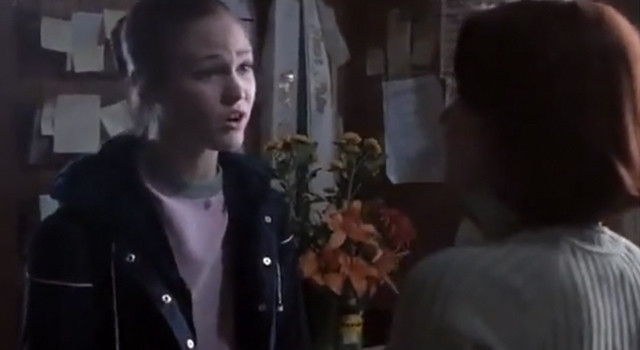 Julia Stiles as Sara in Save the Last Dance, sporting a ballerina bun, pink sweater set, and parka.
Julia Stiles as Sara in Save the Last Dance, sporting a ballerina bun, pink sweater set, and parka.
SARA’S STYLE AND SPOILED BEGINNINGS
The initial scenes paint a clear picture of Sara’s background. Her tightly wound bun immediately signals her ballet roots, a stark contrast to the hip-hop culture she’s about to encounter. Paired with a pink sweater set and a parka, her outfit screams early 2000s suburban ballet dancer out of her element. The somber, instrumental music accompanying flashbacks reveals a backstory of parental manipulation. Sara recounts how she persuaded her overworked mother to attend her Juilliard audition, despite her mother’s evident stress.
This initial portrayal subtly positions Sara as somewhat spoiled and oblivious to the pressures faced by those around her. Many viewers might find it hard to sympathize with a character who seemingly pressures a stressed parent to prioritize their personal ambitions. While Julia Stiles as an actress remains beloved, Sara’s character initially lacks the relatable grit of some of her other roles.
The casting choices further enhance the film’s intended atmosphere. The audition panel, with the “Ponytail Man,” embodies the stereotypical image of artsy adults as envisioned by children, a perception seemingly shared by the casting director.
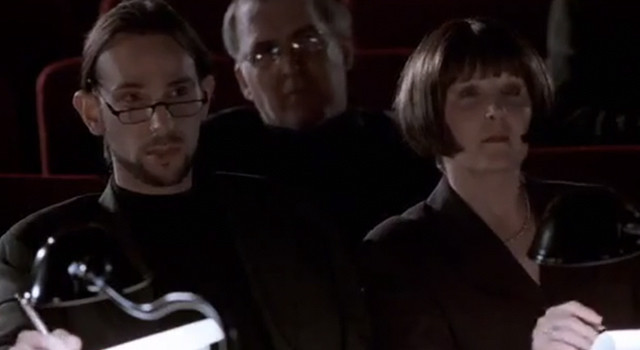 A scene from Save the Last Dance featuring Sara's ballet audition panel.
A scene from Save the Last Dance featuring Sara's ballet audition panel.
Sara’s audition mishap, a fall that shatters her Juilliard dreams, triggers a chain of tragic events. Her mother, burdened by guilt after Sara’s emotional manipulation, is involved in a fatal car accident. This dramatic turn, while undeniably impactful, adds a layer of heightened melodrama to the narrative.
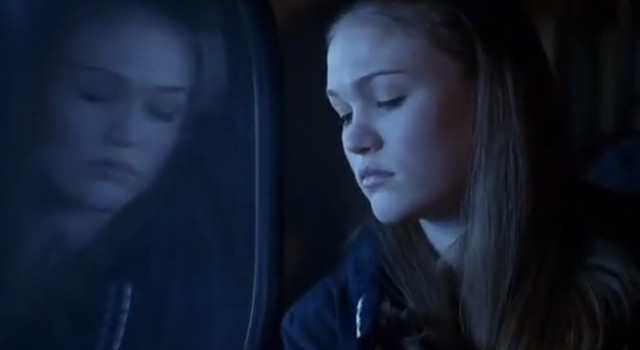 A somber scene from Save the Last Dance depicting the aftermath of a car accident.
A somber scene from Save the Last Dance depicting the aftermath of a car accident.
CHICAGO AND CULTURE SHOCK
Sara’s relocation to Chicago marks a stark shift in environment and culture. The absence of music in these initial Chicago scenes underscores her isolation and displacement. She reunites with her father, who, with his appearance, seems to embody a different kind of musical sensibility, perhaps one less attuned to mainstream trends and more focused on “B-sides to underground leaked albums.”
 Sara with her father in Save the Last Dance, in a scene depicting their strained relationship.
Sara with her father in Save the Last Dance, in a scene depicting their strained relationship.
Sara’s resentment towards her father is palpable, fueled by grief and displacement. This emotional turmoil is further amplified when she arrives at her new school and encounters hip-hop music for what seems like the first time. Her fashion choices continue to highlight her outsider status. Donning an ensemble of winter accessories, seemingly pulled from a box labeled “WINTER CLOTHES,” in a Chicago high school setting, further emphasizes her fish-out-of-water predicament.
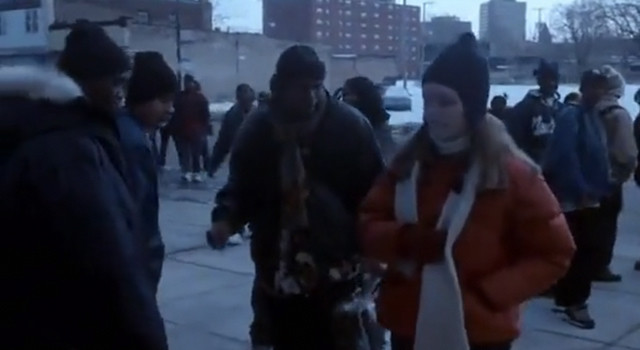 Sara's first day at school in Save the Last Dance, wearing a bright winter coat and accessories that make her stand out.
Sara's first day at school in Save the Last Dance, wearing a bright winter coat and accessories that make her stand out.
Her bright coat acts as a visual metaphor for her social awkwardness, drawing stares and whispers from fellow students. The school’s principal or guidance counselor, in contrast, embodies patience as Sara’s striped sweater, as described, “screams like a banshee,” further contributing to her visually jarring presence in her new environment.
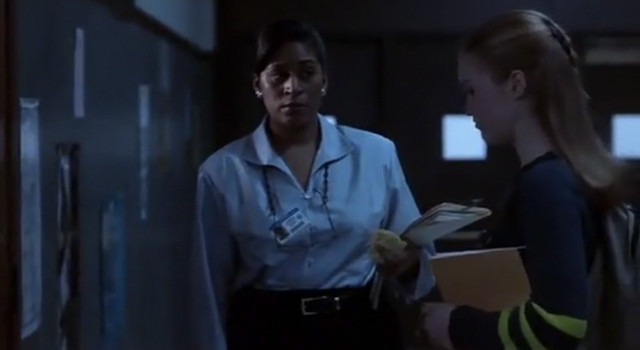 Sara in the school office, wearing a striped sweater, standing out in her new environment.
Sara in the school office, wearing a striped sweater, standing out in her new environment.
CHENILLE: THE SAVIOR AND STYLE GURU
Enter Chenille, the true guiding force in Sara’s transformation. Kerry Washington’s portrayal of Chenille is pivotal, rescuing both Sara and perhaps the film itself from becoming overly focused on Sara’s initial cluelessness. Chenille quickly establishes herself as the knowledgeable and grounded character, in stark contrast to Sara’s initial naiveté. Imagine Sara having actually made it to Juilliard in her initial state; she might have been hopelessly lost navigating the complexities of city life.
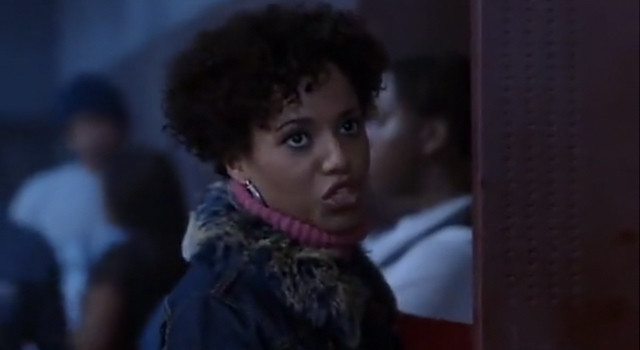 Kerry Washington as Chenille in Save the Last Dance, offering a welcoming presence.
Kerry Washington as Chenille in Save the Last Dance, offering a welcoming presence.
Chenille’s role extends far beyond friendship; she becomes Sara’s mentor in all things Chicago. She teaches Sara how to dress appropriately, how to navigate social situations, how to simply exist within this new cultural landscape, and, crucially, how to avoid social faux pas. If Save the Last Dance were set in Bronson Alcott High, Chenille would undoubtedly be the Cher to Sara’s Tai, but with even greater patience considering Sara’s initial cultural obliviousness.
Sara’s fascination with Nikki’s hip-hop dancing in the cafeteria scene highlights this cultural gap. Chenille’s simple explanation, “It’s just a little hip-hop,” underscores Sara’s profound unfamiliarity with a genre that is commonplace to everyone around her.
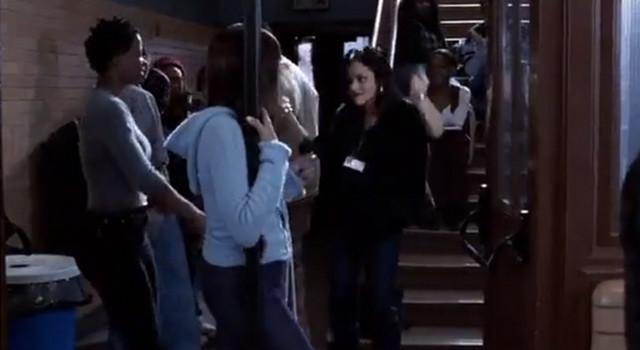 Sara observing Nikki dancing in the cafeteria in Save the Last Dance, showing her unfamiliarity with hip-hop culture.
Sara observing Nikki dancing in the cafeteria in Save the Last Dance, showing her unfamiliarity with hip-hop culture.
Sara’s apparent lack of exposure to hip-hop, despite its widespread presence in media, raises questions about her sheltered upbringing. Her prolonged staring at Nikki dancing in the cafeteria further emphasizes her social awkwardness. It’s as if she has never encountered MTV or any form of popular culture outside of ballet.
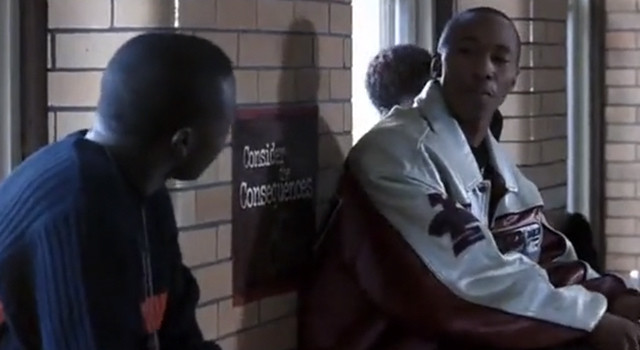 Fredro Starr in Save the Last Dance, adding to the film's cultural backdrop.
Fredro Starr in Save the Last Dance, adding to the film's cultural backdrop.
Chenille steps in, not just as a friend, but as a cultural guide.
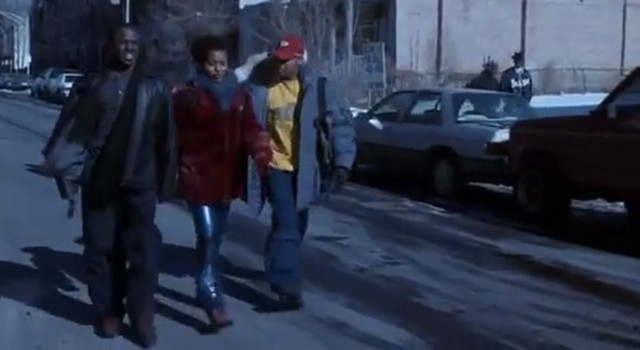 Chenille approaching Sara in the cafeteria in Save the Last Dance, initiating their friendship.
Chenille approaching Sara in the cafeteria in Save the Last Dance, initiating their friendship.
Chenille’s fashion sense is consistently presented as contemporary and stylish, aligning with trends. Described as wearing “everything that’s made up most F/W 2014 collections: faux fur, turtlenecks, leather pants,” Chenille’s wardrobe suggests she is the film’s true style icon. Without Chenille’s influence, Sara might have remained isolated and lost in her new surroundings, eating lunch alone in the bathroom and retreating into solitude each night.
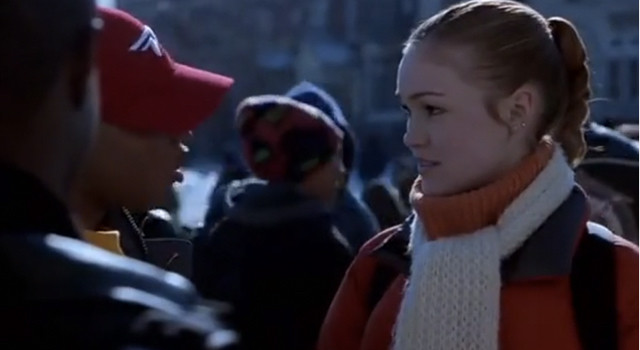 Chenille in Save the Last Dance, showcasing her trendy and fashionable style.
Chenille in Save the Last Dance, showcasing her trendy and fashionable style.
MAKEOVER AND MUSICAL AWAKENING
Sara’s transformation begins with a fashion overhaul at Chenille’s apartment. After initially boasting to Derek about her dance prowess, Sara finds herself at Chenille’s, where she receives a much-needed style intervention. Chenille’s candid assessment of Sara’s “fifth-grade, dance-looking top” is both humorous and pivotal.
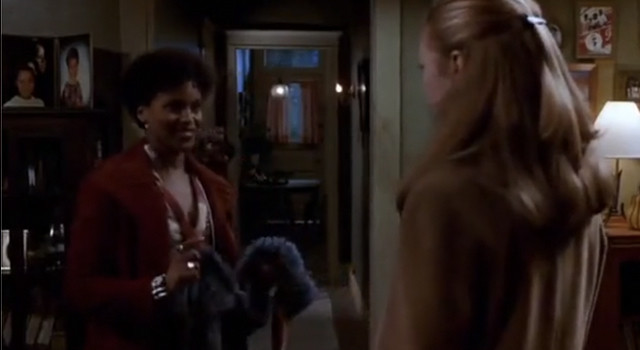 Chenille and Sara at Chenille's apartment in Save the Last Dance, during Sara's style transformation.
Chenille and Sara at Chenille's apartment in Save the Last Dance, during Sara's style transformation.
The style makeover is a success, marking a turning point in Sara’s assimilation. This newfound “okay-ness” is celebrated with the energetic sounds of Fat Man Scoop’s “Put Your Hands Up,” as Chenille confidently handles street harassment, solidifying her role as a protector and guide.
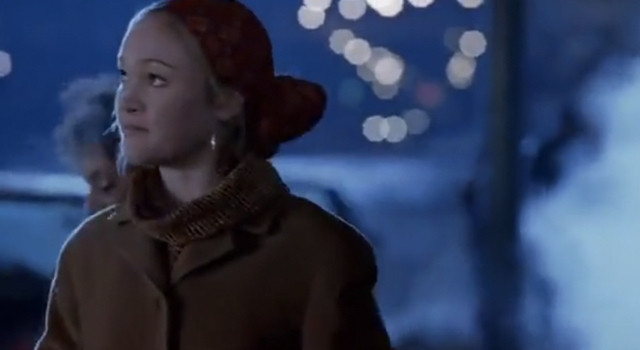 Chenille confidently handling street harassment in Save the Last Dance, demonstrating her protective nature.
Chenille confidently handling street harassment in Save the Last Dance, demonstrating her protective nature.
Nikki’s character, though not as central as Chenille, also adds depth to the film’s fashion and cultural landscape. Her style, featuring chokers and statement cuffs, is noted as being ahead of trends, drawing comparisons to high fashion runways. Nikki’s character, deserving of more screen time, hints at a richer backstory unexplored in the film.
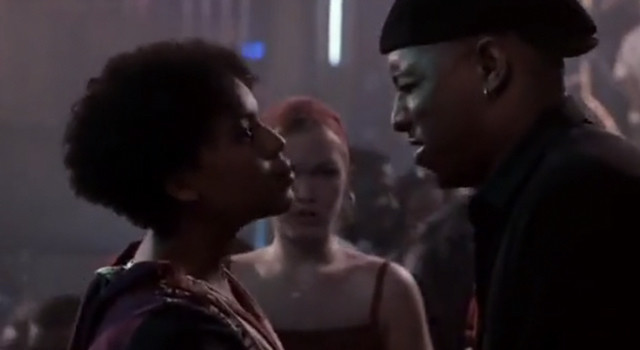 Nikki dancing in Save the Last Dance, highlighting her stylish chokers and fashion sense.
Nikki dancing in Save the Last Dance, highlighting her stylish chokers and fashion sense.
A confrontation revealing Nikki’s past with Derek leaves Sara emotionally isolated. Amidst this, the music shifts to Chaka Demus & Pliers’ “Murder She Wrote,” setting the stage for Derek’s re-entry and a pivotal dance scene. Despite her earlier bravado about out-dancing Derek, Sara struggles to find the beat, even to “Da Rockwilder,” a testament to her initial unfamiliarity with hip-hop rhythms, despite being a “Juilliard-worthy dancer.”
 Sara and Derek dancing in Save the Last Dance, highlighting Sara's initial struggle with hip-hop dance.
Sara and Derek dancing in Save the Last Dance, highlighting Sara's initial struggle with hip-hop dance.
THE REYNOLDS FAMILY MAGIC AND STYLE MERGE
The film subtly emphasizes the transformative power of the Reynolds family. Derek and Chenille collectively “make” Sara, guiding her through a cultural and personal makeover. This narrative arc mirrors classic teen makeover movies, but instead of superficial changes, it focuses on internal growth, teaching Sara social awareness and cultural understanding through fashion, music, and dance. Their dance to the remix of “Love Like This Before” subtly foreshadows their burgeoning romantic connection.
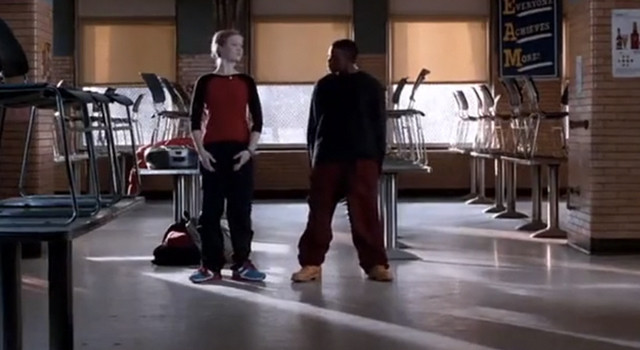 Sara and Derek dancing closely in Save the Last Dance, hinting at their developing romance.
Sara and Derek dancing closely in Save the Last Dance, hinting at their developing romance.
Derek’s influence becomes increasingly apparent as Sara’s style evolves. He teaches her to dance with genuine rhythm, using Donell Jones’ “U Know What’s Up” as his soundtrack. Sara’s fashion choices begin to shift, moving away from her initial preppy style towards a more tomboyish aesthetic, mirroring Derek’s influence rather than Chenille’s.
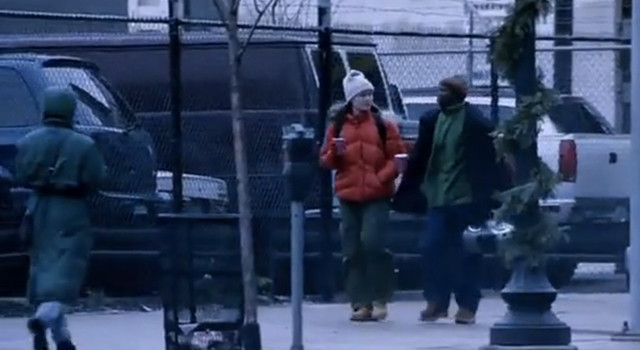 Sara and Derek in Save the Last Dance, showcasing their coordinated, complementary outfits.
Sara and Derek in Save the Last Dance, showcasing their coordinated, complementary outfits.
Their outfits increasingly complement each other, signaling their growing connection. Sara’s orange jacket, paired with carpenter pants, now appears less random, reflecting a toned-down, more urban style. This stylistic shift suggests Sara is not just adapting to a new culture but also discovering a new facet of her own identity, influenced by Derek’s masculine aesthetic.
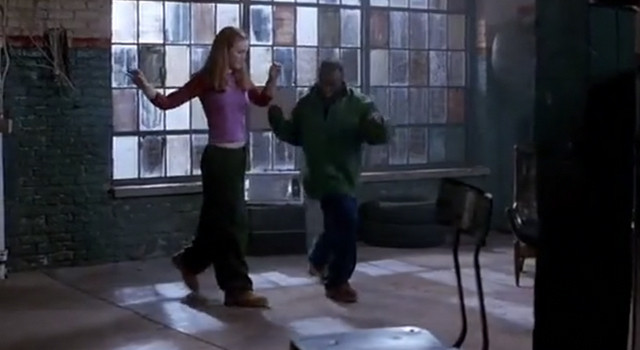 Sara and Derek together in Save the Last Dance, their outfits showing a clear stylistic harmony.
Sara and Derek together in Save the Last Dance, their outfits showing a clear stylistic harmony.
Sara’s chameleon-like style, adapting to whichever Reynolds sibling she is with, becomes a recurring motif. When with Derek, she adopts masculine styles and colors; with Chenille, she mirrors Chenille’s trendier, more feminine looks, like the paisley top reminiscent of Chenille’s club attire.
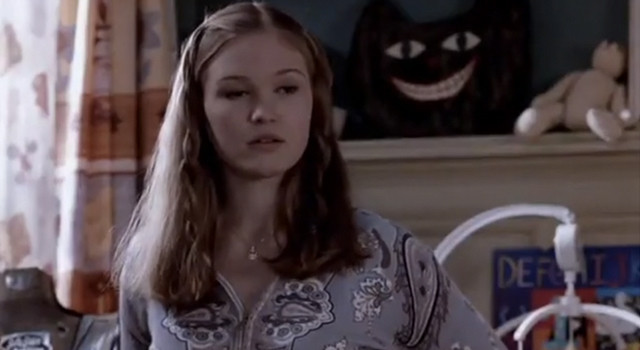 Sara and Chenille in Save the Last Dance, their outfits reflecting Chenille's influence on Sara's style.
Sara and Chenille in Save the Last Dance, their outfits reflecting Chenille's influence on Sara's style.
This stylistic mirroring underscores the film’s theme of self-discovery through friendship. The Reynolds siblings’ perspectives, deserving of their own spin-off, remain somewhat secondary to Sara’s journey.
ROMANCE AND REALIZATIONS
En route to the ballet, Sara and Derek, once again in coordinated peacoats, share a kiss, set to Jesse Powell’s “I Can Tell.”
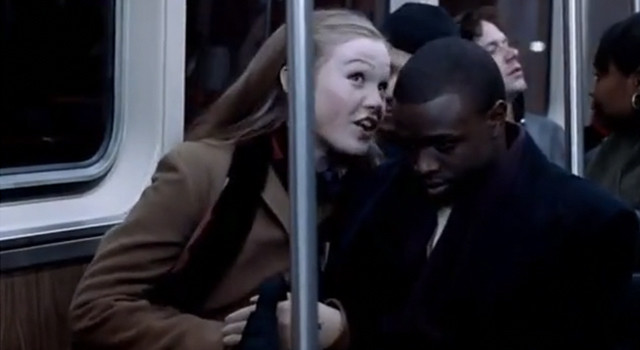 Sara and Derek kissing in Save the Last Dance, both wearing peacoats in a romantic scene.
Sara and Derek kissing in Save the Last Dance, both wearing peacoats in a romantic scene.
This romantic interlude leads to Derek’s pivotal encouragement for Sara to pursue Juilliard, culminating in a montage set to 112 and Notorious B.I.G.’s “Only You.” The film subtly shifts away from a typical “boy saves girl” narrative, emphasizing the brother-sister dynamic of Derek and Chenille as the true catalysts for Sara’s growth.
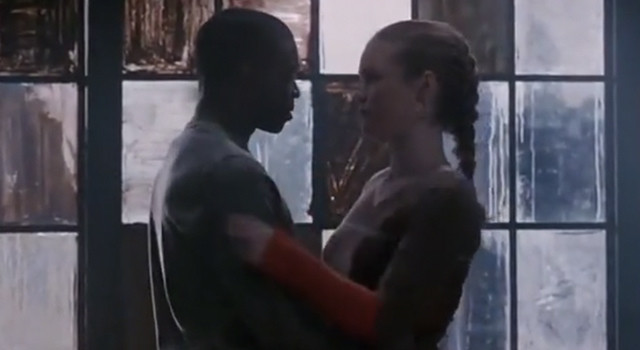 Sara and Derek in Save the Last Dance, Derek encouraging Sara about her future.
Sara and Derek in Save the Last Dance, Derek encouraging Sara about her future.
At Steps, during a dance scene set to Ice Cube’s “You Can Do It,” Sara truly stands out, not due to a fashion misstep, but for her confident individuality. Unlike everyone else in muted colors, Sara boldly chooses pink sequins, while Derek and Chenille are in black. Fredro Starr, however, steals the scene with indoor sunglasses.
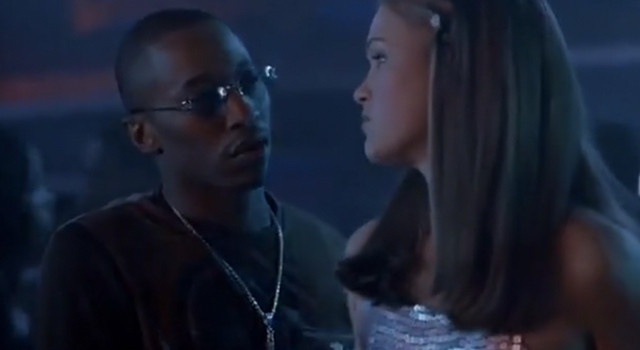 Sara dancing at Steps in Save the Last Dance, wearing a pink sequined top and standing out from the crowd.
Sara dancing at Steps in Save the Last Dance, wearing a pink sequined top and standing out from the crowd.
The initial romantic connection between Sara and Derek is further underscored by Fredro Starr’s “True Colors” playing during their intimate moments, ironically juxtaposed with his character in the film predicting their relationship’s failure.
However, the relationship faces challenges. Sara’s style diverges from the Reynolds’ influence, leading to friction with Chenille and a breakup with Derek.
 Sara in Save the Last Dance, showing a shift in style that causes friction in her relationships.
Sara in Save the Last Dance, showing a shift in style that causes friction in her relationships.
This period of conflict is visually represented by Sara’s braided hairstyle and emotionally underscored by K-Ci and JoJo’s “Crazy,” highlighting the turmoil of breakups and personal struggles.
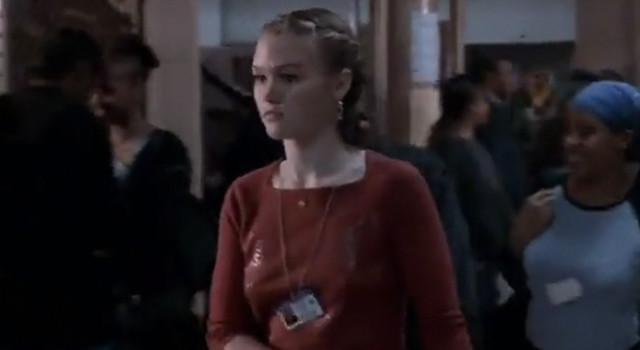 Sara looking sad in Save the Last Dance, reflecting the emotional turmoil of her breakup.
Sara looking sad in Save the Last Dance, reflecting the emotional turmoil of her breakup.
REDEMPTION AND RECONCILIATION
Sara’s journey culminates in self-awareness and proactive problem-solving. She reconciles with Chenille, who patiently explains the complexities of relationships and reaffirms their friendship. At her second Juilliard audition, despite an initial stumble, Derek’s supportive presence inspires a transformative performance.
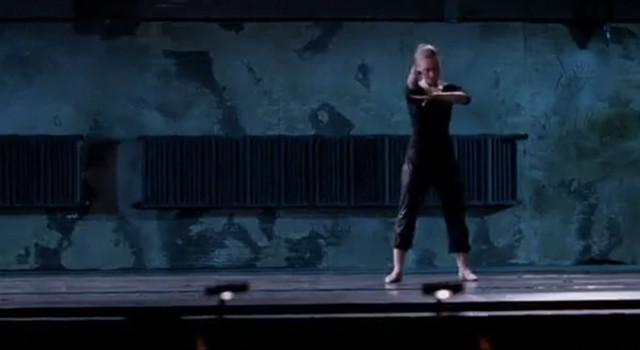 Sara and Derek at her Juilliard audition in Save the Last Dance, showing his support for her.
Sara and Derek at her Juilliard audition in Save the Last Dance, showing his support for her.
Athena Cage’s “All Or Nothing” accompanies this pivotal scene, as Sara, now in leather pants matching Derek’s jacket, delivers a performance that defies convention but captures raw emotion and authenticity. This performance, though perhaps unconventional for Juilliard, symbolizes Sara’s personal breakthrough.
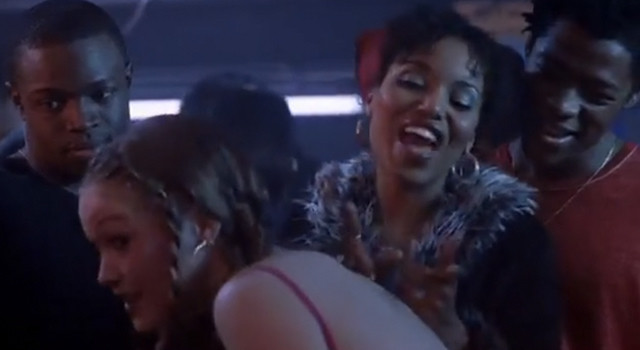 Sara and Chenille embracing in Save the Last Dance, signifying their reconciled friendship.
Sara and Chenille embracing in Save the Last Dance, signifying their reconciled friendship.
Ultimately, Sara emerges as a synthesis of her original self, Derek’s influence, and Chenille’s guidance, a more complete and self-aware individual than when the film began.
As Montell Jordan’s “Get It On Tonite” plays, the film concludes, leaving viewers with the message that while music can be transformative, the true agents of change are patient, supportive people who help others find their strength and become, if not perfect, then certainly “less terrible.” Save the Last Dance, starring Julia Stiles, is a testament to this journey of transformation and the power of human connection.

